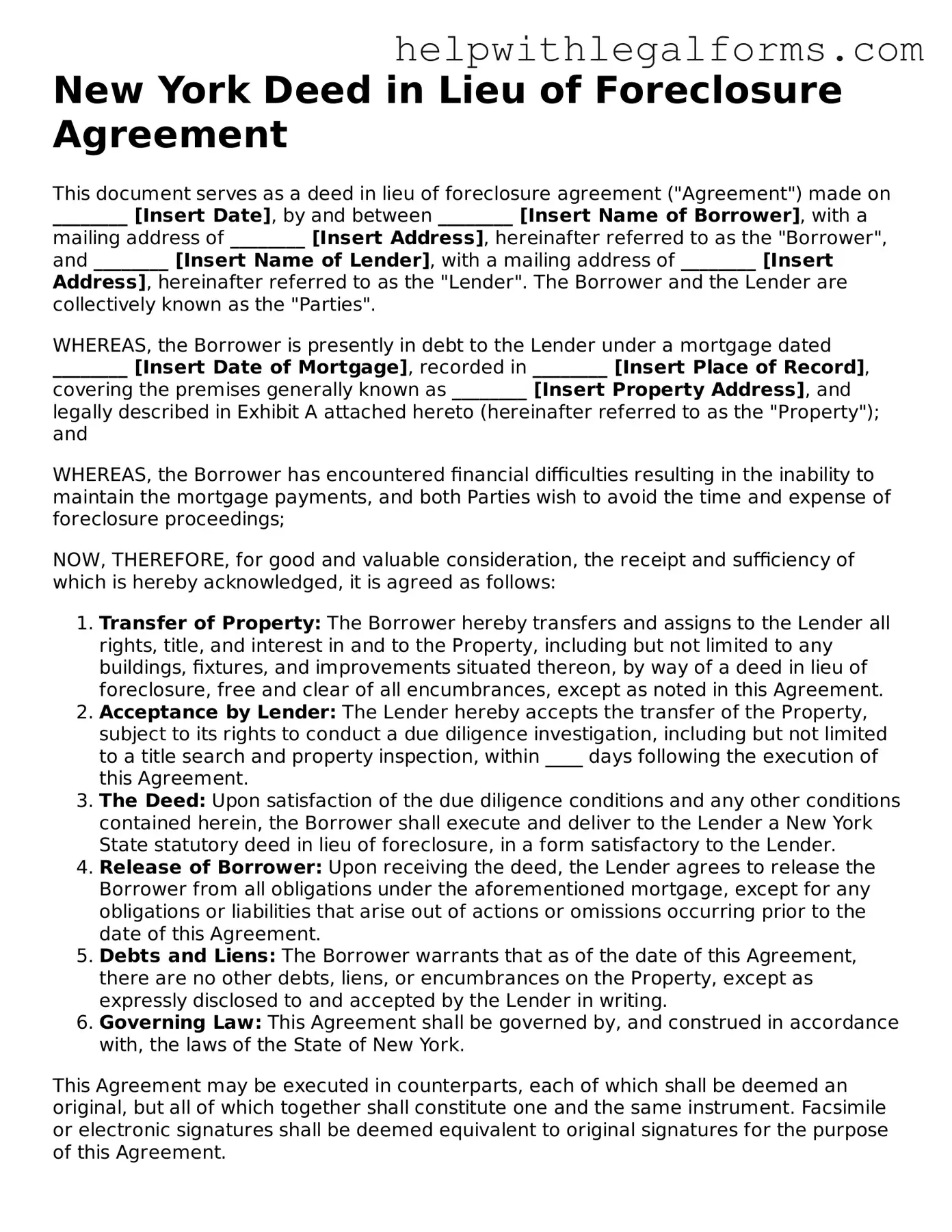New York Deed in Lieu of Foreclosure Agreement
This document serves as a deed in lieu of foreclosure agreement ("Agreement") made on ________ [Insert Date], by and between ________ [Insert Name of Borrower], with a mailing address of ________ [Insert Address], hereinafter referred to as the "Borrower", and ________ [Insert Name of Lender], with a mailing address of ________ [Insert Address], hereinafter referred to as the "Lender". The Borrower and the Lender are collectively known as the "Parties".
WHEREAS, the Borrower is presently in debt to the Lender under a mortgage dated ________ [Insert Date of Mortgage], recorded in ________ [Insert Place of Record], covering the premises generally known as ________ [Insert Property Address], and legally described in Exhibit A attached hereto (hereinafter referred to as the "Property"); and
WHEREAS, the Borrower has encountered financial difficulties resulting in the inability to maintain the mortgage payments, and both Parties wish to avoid the time and expense of foreclosure proceedings;
NOW, THEREFORE, for good and valuable consideration, the receipt and sufficiency of which is hereby acknowledged, it is agreed as follows:
- Transfer of Property: The Borrower hereby transfers and assigns to the Lender all rights, title, and interest in and to the Property, including but not limited to any buildings, fixtures, and improvements situated thereon, by way of a deed in lieu of foreclosure, free and clear of all encumbrances, except as noted in this Agreement.
- Acceptance by Lender: The Lender hereby accepts the transfer of the Property, subject to its rights to conduct a due diligence investigation, including but not limited to a title search and property inspection, within ____ days following the execution of this Agreement.
- The Deed: Upon satisfaction of the due diligence conditions and any other conditions contained herein, the Borrower shall execute and deliver to the Lender a New York State statutory deed in lieu of foreclosure, in a form satisfactory to the Lender.
- Release of Borrower: Upon receiving the deed, the Lender agrees to release the Borrower from all obligations under the aforementioned mortgage, except for any obligations or liabilities that arise out of actions or omissions occurring prior to the date of this Agreement.
- Debts and Liens: The Borrower warrants that as of the date of this Agreement, there are no other debts, liens, or encumbrances on the Property, except as expressly disclosed to and accepted by the Lender in writing.
- Governing Law: This Agreement shall be governed by, and construed in accordance with, the laws of the State of New York.
This Agreement may be executed in counterparts, each of which shall be deemed an original, but all of which together shall constitute one and the same instrument. Facsimile or electronic signatures shall be deemed equivalent to original signatures for the purpose of this Agreement.
IN WITNESS WHEREOF, the Parties have executed this Agreement as of the date first above written.
__________________________
Borrower's Signature
__________________________
Lender's Signature
Exhibit A: Legal Description of the Property
